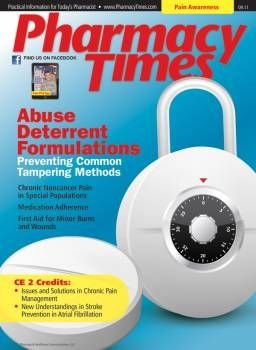The Highway Metaphor Myth
The “highway metaphor” is a myth perpetuated in biomedical literature that has real consequences for drug interaction detection systems.
It seems to make so much sense. If a patient takes 2 drugs that both undergo metabolism by the same enzyme, it seems logical that there would be competition for metabolism between the 2 drugs, and the plasma concentrations of at least 1 of the drugs would increase.
Although this seems like a logical statement, it is clear from empirical evidence that it is not necessarily true. Many drugs are substrates for a given isozyme or transporter, but have no discernible inhibitory effect on that same isozyme or transporter. This is a myth about drug interactions in general that has gained traction in the biomedical literature.
Debunking the Myth
Unfortunately, this myth is supported by a most appealing metaphor—that of traffic on a highway. The argument is that with more cars (drugs) going down the same highway (drug-metabolizing enzymes), there will be competition for the available lanes (enzymatic sites) and there will be a traffic jam (enzyme inhibition).
But the metaphor fails to consider that the highway may well be able to handle increased traffic with no slowdown. Cytochrome P450 (CYP) 3A4 has considerable capacity to metabolize several drugs at once, so CYP3A4 might be considered an 8-lane freeway. Moreover, some drugs are given in relatively small molar quantities, and they don’t need much enzymatic capacity for their metabolism—they are like motorcycles on a freeway, which don’t need much room.
How a drug is metabolized often has little bearing on what enzymes the drug will inhibit. Most calcium channel blockers are metabolized by CYP3A4, but most do not inhibit CYP3A4; almost all beta-adrenergic blockers are metabolized by CYP2D6, but they do not inhibit CYP2D6; many benzodiazepines are metabolized by CYP3A4 but do not inhibit CYP3A4; fexofenadine is a P-glycoprotein substrate but not an inhibitor; and quinidine is metabolized by CYP3A4, but it inhibits CYP2D6.
The list of exceptions is long.1 Indeed, some substrates of enzymes not only fail to inhibit that isozyme, they induce it—consider dexamethasone, which is both a CYP3A4 substrate and a CYP3A4 inducer.
The Myth Perpetuated
A particularly unfortunate (and possibly deadly) example of the “Highway Myth” involves a recent epidemiologic study on the effect of CYP2D6 inhibitors on the efficacy of tamoxifen in breast cancer patients.2 Based on this study, the authors stated in an editorial, “available (studies) do not appear to support a negative impact of CYP2D6 inhibitor use on breast cancer recurrence and mortality in women using tamoxifen.”3
Unfortunately, they based this statement on a stunningly flawed study in which only 8 of the 31 drugs they considered “CYP2D6 inhibitors” are actually known to inhibit CYP2D6.4 Apparently, they succumbed to the “Highway Myth,” because they listed a number of drugs that are substrates for CYP2D6 but are not known to be inhibitors.
Discussions of colchicine drug interactions are also often infected with the Highway Myth. Numerous published reviews, case reports, and other documents discussing colchicine drug interactions have assumed that all CYP3A4 substrates and P-glycoprotein substrates will automatically compete with colchicine and will increase the risk of colchicine toxicity.5-11
This kind of error increases the “noise” in drug interaction detection systems, and makes it more difficult to focus on the real colchicine drug interactions. This is unfortunate, because administration of colchicine with actual CYP3A4 inhibitors and/or P-glycoprotein inhibitors has resulted in numerous cases of fatal colchicine toxicity.
Summary
Drugs that are substrates for a given drug metabolizing enzyme or drug transporter are not necessarily inhibitors of that enzyme or transporter. Articles on drug interactions that list “substrates” or “modulators” of an enzyme as automatic inhibitors of that enzyme are likely to have erroneous information on drug interactions. Pharmacists could help correct this misconception by personally informing other health professionals about the “Highway Myth.”
Drs. Horn and Hansten are both professors of pharmacy at the University of Washington School of Pharmacy. For an electronic version of this article, including references if any, visit www.hanstenandhorn.com.
References
1. Hansten PD, Horn JR. Cytochrome P450 enzymes and transporter table. In: The Top 100 Drug Interactions: A guide to patient management. Edmonds, WA: H&H Publications; 2011.
2. Lash TL, Cronin-Fenton D, Ahern TP, et al. CYP2D6 inhibition and breast cancer recurrence in a population-based study in Denmark. J Natl Cancer Inst. 2011;103:489-500.
3. Cronin-Fenton D, Lash TL, Sørenson HT. Selective serotonin reuptake inhibitors and adjuvant tamoxifen therapy: risk of breast cancer recurrence and mortality. Future Oncology. 2010;6:877-880.
4. Lash TL, Cronin-Fenton D, Ahern TP, et al. Breast cancer recurrence risk related to concurrent use of SSRI antidepressants and tamoxifen. Acta Oncologica. 2010;49:305-312.
5. Terkeltaub RA. Colchicine update: 2008. Semin Arthritis Rheum. 2009;38:411-419; Niel E, Scherrmann J-M. Colchicine today. Joint Bone Spine. 2006;73:672-678.
6. McKinnell J, Tayek JA. Short term treatment with clarithromycin resulting in colchicine-induced rhabdomyolysis. J Clin Rheumatol. 2009;15:303-305.
7. Akdag I, Ersoy A, Kahvecioglu S, Gullulu M, Dilek K. Acute colchicine intoxication during clarithromycin administration in patients with chronic renal failure. J Nephrol. 2006;19:515-517.
8. Sahin G, Korkmaz C, Yalcin AU. Which statin should be used together with colchicine? clinical experience in three patients with nephritic syndrome due to AA type amyloidosis. Rheumatol Int. 2008;28:289-291.
9. Torgovnick J, Sethi N, Arsura E. Colchicine and HMG Co-A reductase inhibitors induced myopathy—a case report. NeutoToxicology. 2006;27:1126-1127.
10. Justiniano M, Dold S, Espinoza LR. Rapid onset of muscle weakness (rhabdomyolysis) associated with the combined use of simvastatin and colchicine [letter]. J Clin Rheumatol. 2007;13:266-268.
11. Hsu W-C, Chen WH, Chang MT, Chiu HC. Colchicine-induced acute myopathy in a patient with concomitant use of simvastatin. Clin Neuropharmacol. 2002;25:266-268.

